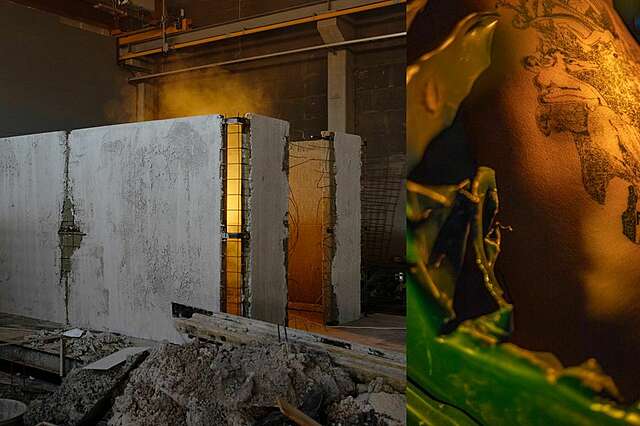Latest issue of Ark seeks the ideal spaces for performances

Finnish Architectural Review
The Finnish Architectural Review’s Stage issue, published in May, contemplates the ideal features of a theatre building and asses how event arenas fit into the surrounding city.
Over the last fifty-odd years, the ideal form of a theatre stage, both in Finland and worldwide, has been the so-called black box. Once a radical spatial concept, the goal of the black box was to create a space that would be as neutral and versatile as possible and would easily suit the needs of varied performances, thus reaching new audiences.
The space did not need to be wrapped up in a monumental frame, but would rather position itself as a natural part of the existing urban fabric, as one public service among the others. In the 1970s, one of Finland’s leading proponents of the new type of theatre building was architect Pentti Piha, whose work and activities are examined in the latest issue of the Finnish Architectural Review by Kaisa Karvinen.
In the present, this spatial ideal is being challenged, as demonstrated by the several pieces featured in the journal. Venla Kotilainen and Heini Hermunen reflect on the limitations imposed by the ostensible neutrality of the black box from the perspective of social accessibility. In his piece, Jaakko Karhunen writes about the counter reaction to black box-like modern cinema stages, throwing the idea that spatial framework and the necessary audiovisual technology could be a part of the screening.
Many of today’s theatre-makers are intrigued by staging performances in other existing spaces, which then become an integral element of the dramatic piece itself. The chosen venue is typically a vacant, condemned building, which entails that the performance inevitably takes a stand on the current issues of protecting demolishing buildings. Dramaturge Henriikka Himma contemplates these themes through the lens of two of her recent place-bound productions.
Another type of contemporary stage is represented by multi-purpose arenas that serve as sport, concert and event venues. Over the last fifteen years, they have become a key component of ambitious development projects in our city centres, and the plans are often driven by construction companies and property investors. Tommy Lindgren writes about the type of urban environment that has been or is being created based on this premise in four large Finnish cities.
The issue also introduces three recent projects built for theatre, events, and sports. The Finnish National Theatre’s 1950s extension designed by Heikki and Kaija Siren, Small Stage, has been renovated with reverence to the original architecture, and former auxiliary spaces have been converted into new types of performance spaces. Architects Davidsson Tarkela were in charge of the refurbishment design.
The Event Centre Satama in Kotka, designed by ALA Architects, is an archetypical black box that facilitates a multitude of events. The multipurpose arena’s architecture draws inspiration from the grand scale and rugged image of the surrounding harbour area.
Tammela Stadium in Tampere, designed by JKMM Architects, demonstrates that the increasingly popular hybrid model of development – the construction of the football stadium was financed by integrating housing and commercial premises into the project – can be applied to create impressive architecture while reconciling a fragmented cityscape, provided that the volume of construction is in proportion to its environment.
Read more at ark.fi


